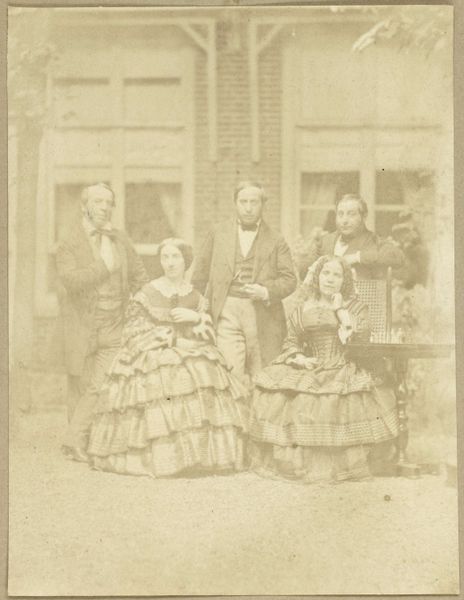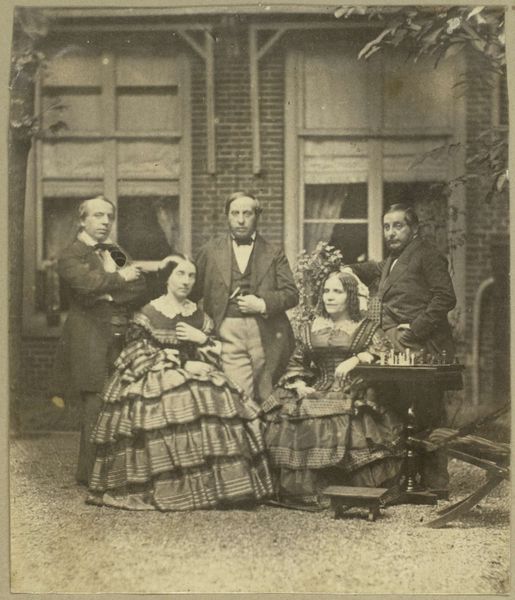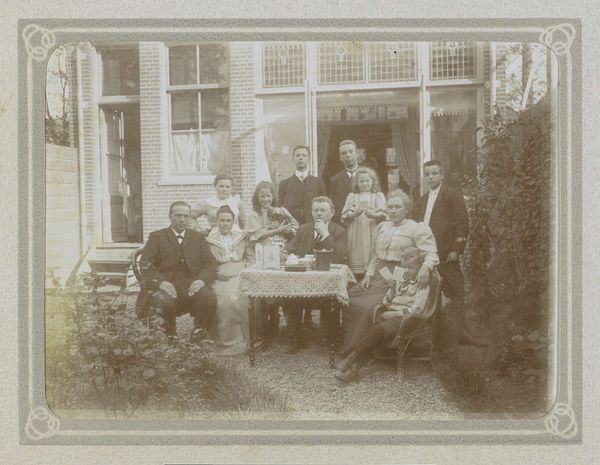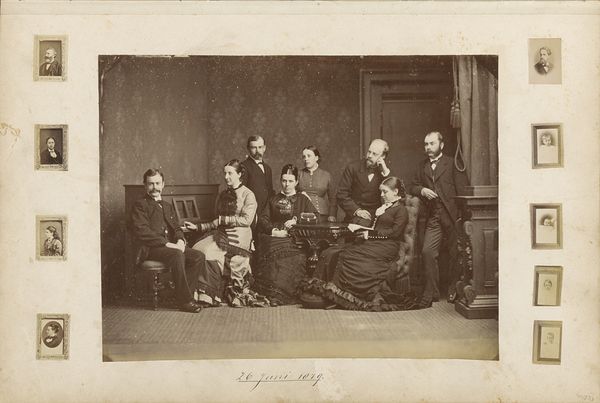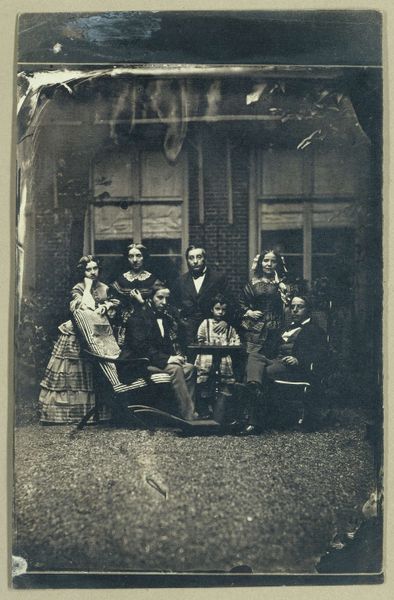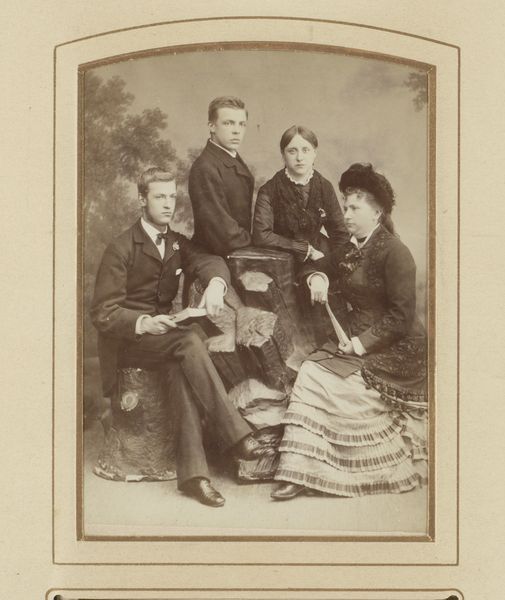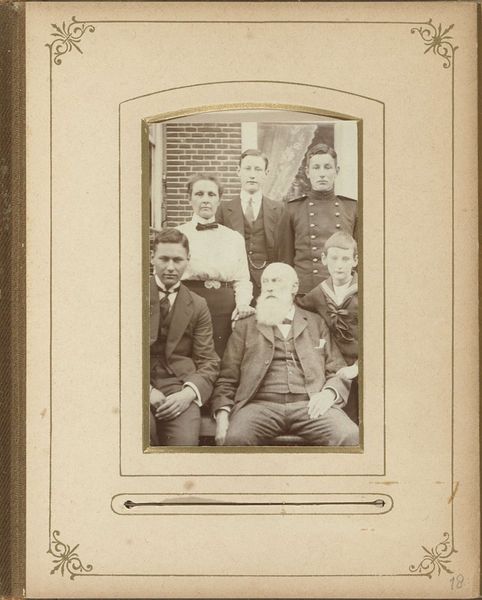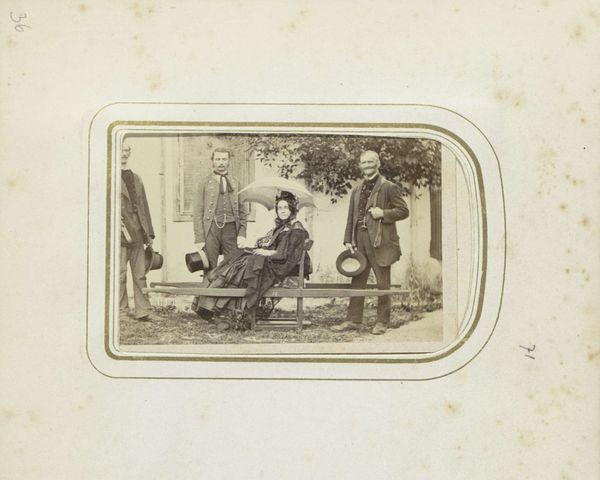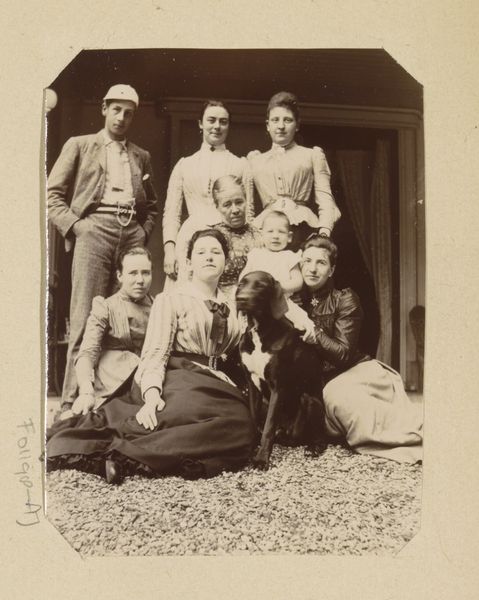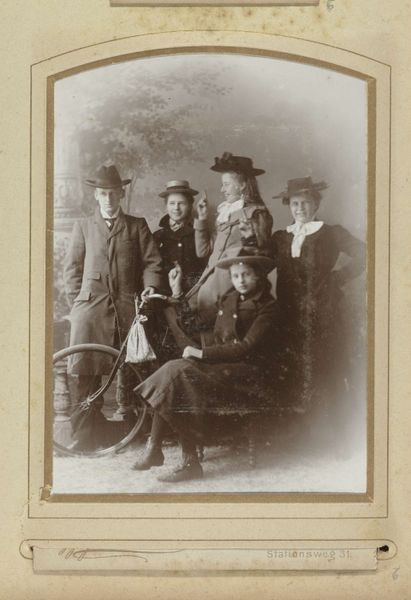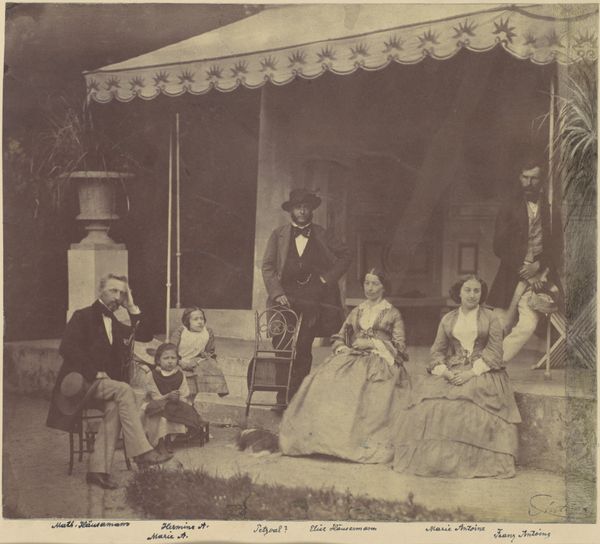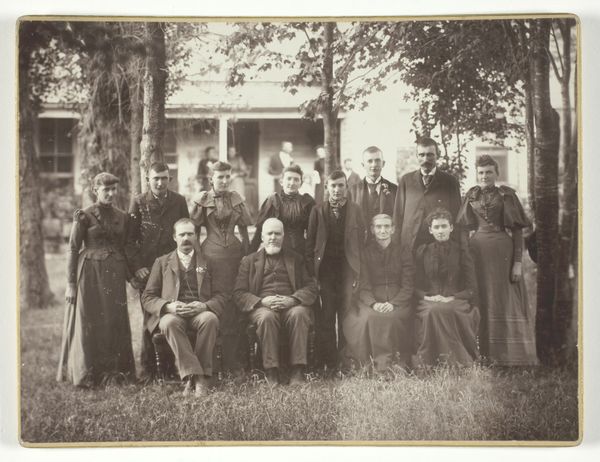
Groepsportret van leden van de families Asser en Oppenheim in een tuin 1856
0:00
0:00
eduardisaacasser
Rijksmuseum
Dimensions: height 116 mm, width 104 mm
Copyright: Rijks Museum: Open Domain
Curator: Here we have a group portrait by Eduard Isaac Asser, a daguerreotype made in 1856. It depicts members of the Asser and Oppenheim families gathered in a garden. Editor: It’s wonderfully melancholic. Like looking at ghosts trying to hold onto summer. You can almost smell the damp earth and hear the rustle of those extravagant skirts. Curator: Daguerreotypes were fascinatingly precise but also had limitations. Notice the static poses. Long exposure times meant subjects had to remain perfectly still, leading to a certain formality. It speaks to the photographic conventions of the time. Editor: Exactly! The solemnity, the almost absurd stiffness... I wonder what they were truly feeling? Were they bored? Irritated? It reminds me of forced smiles at family gatherings, amplified a hundredfold. Curator: Precisely. But there's also a level of performativity inherent in portraiture. They’re presenting themselves for posterity, curating an image of family unity and social standing. Consider the setting, the house as backdrop signaling their status. Editor: Yes, status meticulously framed! I also like that little boy at the table, maybe playing a game of chess... Or perhaps the game is simply a bourgeois stage prop to keep him entertained? There’s something charmingly absurd about him sitting perfectly still at the table with a grave, precocious look. Curator: And let's remember Asser was not just a photographer; he was a lawyer. This photo perhaps reflects his legal mind – precise, organized, seeking to capture a definitive representation. Photography in its early days was also about establishing verifiable truth. Editor: A truth carefully constructed, no doubt! Still, these old photographs get to me. They’re little time capsules; someone loved and handled these things. What did this picture mean to the families in it? To their descendants? Who might they become, how might their history change forever? Curator: Photography gave them agency to project power. They have influence in the art that can reflect power. We must remember that. Editor: The world turns, art endures—sometimes questioning, sometimes bolstering the status quo. That’s the beauty of it, isn't it? Thanks for making me look. Curator: Thank you for making me think!
Comments
No comments
Be the first to comment and join the conversation on the ultimate creative platform.
